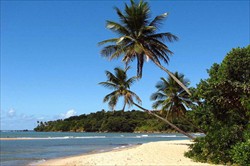
Delima Soccer
Providing coaching education, individual and team training with top clubs in Brazil.
About Brazil
Brazil is the world’s most successful soccer nation and home to some of the world’s largest and most famous stadiums. Brazil, the only five-time world champion, is the only nation to compete in all seventeen World Cup finals since the first cup was played in Uruguay in 1930. In addition, the country hosts two of the world’s most famous and largest stadiums which are the Maracana stadium in Rio de Janeiro and the Morumbi stadium in Sao Paulo.
Brazil won its fifth World Cup title during the finals held in Korea and Japan in 2002. Brazil’s other moments of glory came in Sweden in 1958; Chile in 1962; Mexico in 1970, where they won the Jules Rimet trophy outright; and the USA in 1994. The country was second in the World Cup in 1950, when the finals were held in Brazil, and second again in France in 1998; third in 1938 and 1978; and fourth in 1974. Over the years, Brazil has produced many famous players. Examples of Brazil’s best-known players are the following: Pele; Kaka (Italy); Robinho (England); Diego (Germany); Fred (France); Ronaldinho Gaucho (Italy); Fabiano (Spain); Luisao (Portugal).

General Facts
- Official Name: Federative Republic of BrazilCapital: Brasilia
- Official Language: Portuguese
- System of Government: A Federative Republic with a multi-party political system. Brazil holds democratic elections for president, senators, representatives, state governors and legislators, mayors and municipal counsels. Brazil is the world leader in electronic online voting (100 million voters.)
- Area: 3,286,470 square miles
- Population: 170 million
- Land Use: 58% forests, 22% pasture, 6% crops, 14% other use.
- Biggest Cities: Sao Paulo (10.4 million), Rio de Janeiro (5.8 million), Salvador (2.4 million), Belo Horizonte (2.2 million), Brasilia (2 million), Recife (1.4 million).
- Money: The official currency is the Real.
Human Feature:
- Density: 52 persons per square mile
- Urban/Rural: 80% urban, 20% rural
- Sex Distribution: 49.9% male, 50.1% female
- Age Breakdown: 35% under 15, 28% 15 to 29, 19% 30 to 44, 10% 45 to 59, 6% 60 to 74, 2% 75 and over.
Main Products: Aircraft, bauxite, beef, cellulose, cereals, coffee, cocoa, crude oil and petrochemicals, diamonds, furniture, gold, households appliances, hydroelectric power engines, iron ore, manganese, motor vehicles, nickel, orange juice, phosphates, platinum, processed food, quartz crystals, rubber, shoes, silver, soybeans, steel, sugar, textiles, timber, tin, titanium, uranium, and zinc.

Geography
Brazil is in east-central South America and occupies nearly 50% of the South American continent. Around 58% of Brazil is covered with forests, which include the largest rainforest in the world, located in the Amazon River basin. The country has eight river systems, which carry approximately 20% of the world’s fresh water.
Brazil is the largest of the Latin American countries covering nearly half (47.3 percent) of the continent of South America. It occupies an area of 3,286,470 sq. miles (8,511,965 sq. km). Its size makes it the fifth largest country in the world after the Russian Federation, Canada, China, and the United States.
Except for a small number of islands, Brazil consists of a single, unbroken land mass. The Equator passes through the north of the country near Macapa and the Tropic of Capricorn passes through the south near Sao Paulo. Brazil’s greatest width, 2,684 miles (4,319.4 km), is almost the same as its greatest distance from north to south, 2,731 miles (4,394.7 km).
Brazil has 10 neighbors: the Department of French Guiana and the countries of Suriname, Guyana, Venezuela, and Colombia bound Brazil on the north. Uruguay and Argentina are on the south, and on the west are Paraguay, Bolivia, and Peru. Ecuador and Chile are the only two countries of continental South America that do not share a border with Brazil. The Atlantic Ocean extends along the entire eastern side of the country, giving it a coastline of 4,578 miles (7,367 km).

Climate
Although 90 percent of the country is within the tropical zone, more than 60 percent of the population live in areas where altitude, sea winds, or cold polar fronts moderate thetemperature. There are five climatic regions in Brazil: equatorial, tropical, semi arid, highland tropical, and subtropical. Plateau cities such as Sao Paulo, Brasilia, and Belo Horizonte have very mild climates averaging 66 degrees F.
Rio de Janeiro, Recife, and Salvador on the coast have warm climates balanced by the constancy of the Trade Winds. In the southern Brazilian cities of Porto Alegre and Curitiba, the subtropical climate is similar to parts of the U.S. and Europe with frosts occurring with some frequency. In this region temperatures in winter can fall below freezing. Despite the popular image of the Amazon as a region of blistering heat, temperatures of more than 90 degrees F. are rarely experienced there. In fact, the annual average temperature in the Amazon region is in the range of 72-79 degrees F. with only a very small seasonal variation between the warmest and the coldest months.
The hottest part of Brazil is the northeast where, during the dry season (May and November), temperatures of more than 100 degrees F. are recorded frequently. The northeast has greater seasonal variation in temperatures than does the Amazon region. Along the Atlantic coast from Recife to Rio de Janeiro, mean temperatures range from 73-81 degrees F. Inland, temperatures are lower ranging from 64-70 degrees F. South of Rio, the seasons are more noticeable and the annual range of temperature greater. The average temperature for this part of the country is in the range between 63-66 degrees F.
Delima Soccer Enterprises, Inc. ©
website by Gordon Badgett